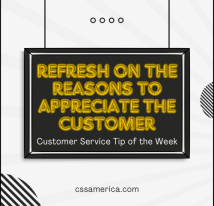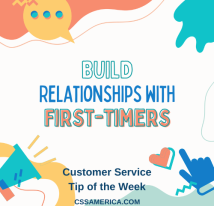
Bob’s home phone (the landline) was not working, and he had called the phone company (using his cell phone) to get it addressed; it worked for an hour and then stopped working again. Bob called the phone company again two days later and noted that the problem had reappeared. The automated system walked him through some questions and remotely rebooted the “gateway,” but the problem persisted. So he called back a third time to talk to a customer service representative. And while there was no resolution, the representative – Vernon – scheduled a service appointment for a technician.
Twice near the end of the call, Vernon told the customer “you’re very nice” (in a platonic, very appreciative tone). He truly appreciated Bob not getting upset; he appreciated Bob working with him on different options to resolve the issue.
This was not a scripted “Thank you for calling” or “I appreciate your business.” This was a sincere compliment to the customer.
Why did the representative provide this compliment? Because if you work in the world of customer service, you know what it’s like to deal with the angry, rude, and unrealistic customers. You know what it’s like to suffer the slings and arrows for the errors of others.
So you also know what it feels like to run across someone who’s not like that at all. You appreciate those customers that are kind, despite their frustration. You appreciate those who are patient even when having an issue. You enjoy the nice person, the empathetic client, the one who asks about you and compliments you.
You appreciate them and those qualities they offer when they could – instead – be negative.
In customer service, you’re often trying to make the experience special for the customer.
Compliment the customer when they make an encounter special for you.
Signup for FREE Tips! Contact Us More Resources for You Visit Our Home Page























